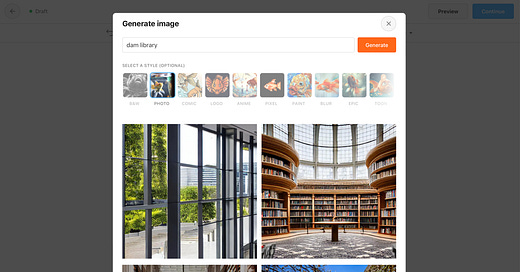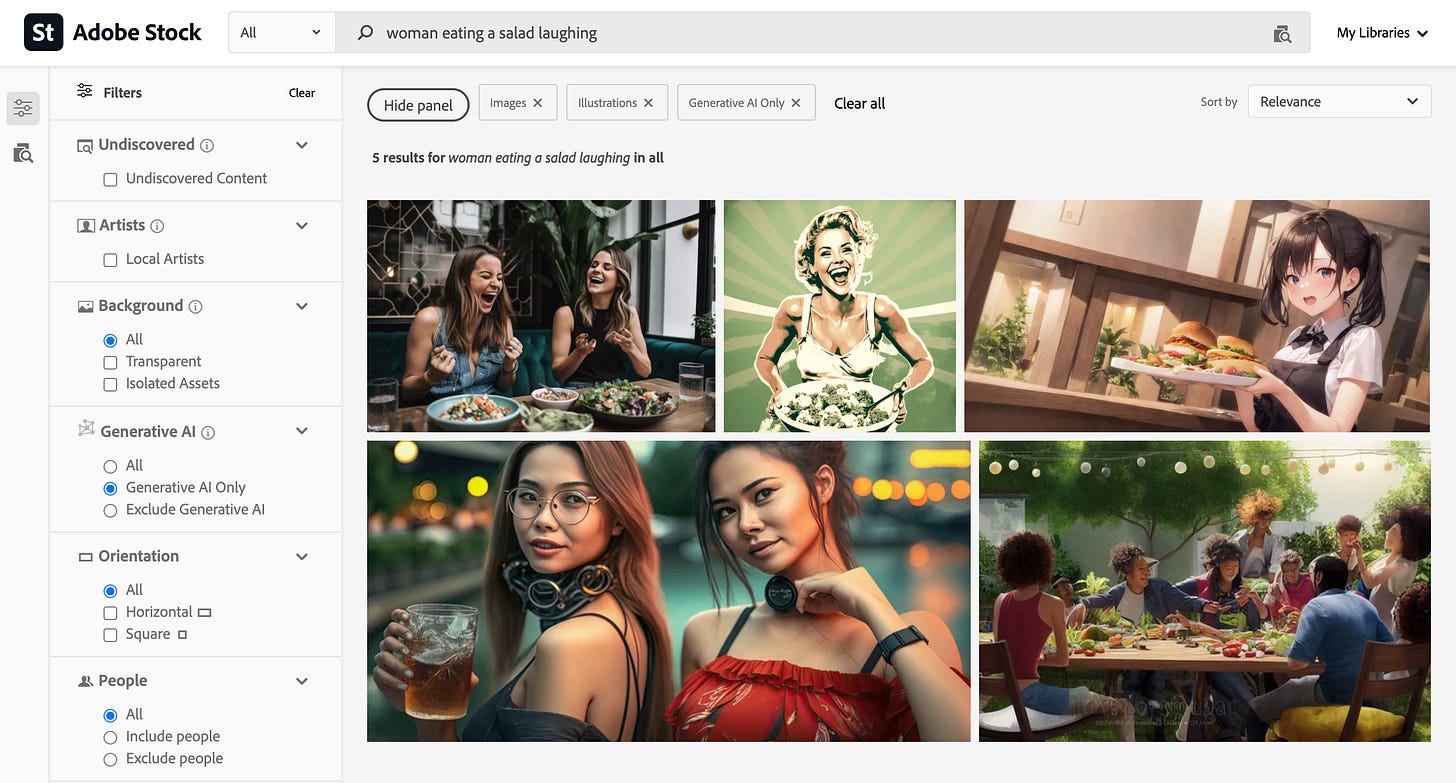Gen-AI has gone mainstream with both Shutterstock and Adobe Stock offering AI-generated licensable stock, and Adobe Firefly, Midjourney, Dream by WOMBO, Craiyon, DALL-E 2 by OpenAI, Bing Image Creator (see a good breakdown of paid and free options here) as paid and free ways to generate images via AI queries. Even this week’s banner image for this post on Substack was generated using a text-to-image generative AI tool.
Talk with any DAM specialist, marketing lead, content creator, editor, or art director and they will have varying opinions on the impact AI will have in the creative market. Maybe varying opinions from the same person on the following day. As I wrote in an earlier post on AI-generated written content, I believe successful coexistence will rely on us to do what humans do best and use these new tools to do what they do best. For now, that means we humans should start asking several questions about how assets that are made using artificial intelligence fit into our DAM strategy and our organization’s creative and brand strategy as a whole. Some to start with (I thought of these and did not ask an AI chatbot for input):
Can we use AI to add metadata or information to our existing assets’ EXIF fields?
Will AI-generated assets be uploaded to your DAM for reuse?
How are we crediting AI-generated art?
What are the ethical implications of using images of real people placed in AI-generated situations?
If using AI images in research, what is the source to check the accuracy?
Because AI delivers different results over time based on queries sent and new information reviewed, how can we recreate search queries?
What is the career implication for junior designers and DAM professionals if spec images and tagging can be handled by AI?
What are the best practices for keeping proprietary information private while generating art based on it?
Who are the leaders in this field?
How will you handle laws that vary globally for AI-generated art and content?
When it comes to stock, at least Shutterstock and Adobe are labeling their AI-generated images as such. While the real-world implications of phony images of riots or evidence of aliens are far-reaching, when it comes to regulated commerce like stock, people want to know which images are created via photographers and illustrators and which are Gen-AI and the marketplace is providing that information. Shutterstock is the only stock agency so far to offer payment to content creators for their images used when customers us AI to generate assets, whereas Adobe is offering AI-generated images that they have created to the results but do not offer customers the option to generate their own. Here are the results to the evergreen search query “woman eating salad laughing:
Adobe: first image, non-AI & second image, only-AI results
Shutterstock: first image: non-AI, second image: only-AI results, third image: Gen-AI creations
So far, my experiments in Gen-AI images have not persuaded me that we have the quality or structures in place to replace all photography or illustrations with the results. But this technology is still very new and has the potential to upend our current workflows and career paths. What questions do we need to ask when figuring out how to best include AI-generated assets in our DAM strategy?









